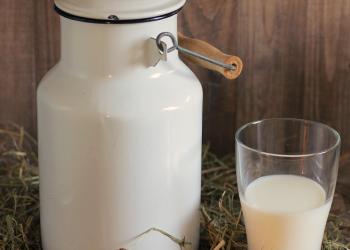Small dairy farms face particular challenges as costs of production often exceed the set federal price for fluid milk. However, consumers have demonstrated a willingness to pay a premium for local dairy products, providing emerging market opportunities for small dairy farms. In Massachusetts, a significant barrier for dairy farmers hoping to capture this premium is lack of access to scale-appropriate fluid milk processing facilities. This project engages stakeholders to identify operational feasibility, market potential, and barriers to access institutional markets.
Farmers will be engaged to assess the interest and potential supply of fluid milk to the processing facility. Activities including grant workshops and energy efficiency education will assist dairy farmers with maximizing their energy savings, allowing them to lower costs of production. Project activities will engage dairy farmers, academic researchers,agricultural trade and marketing organizations, farmer-owned cooperatives, and institutional buyers.
Project Goals and Objectives:
The goal of this project is to increase profit margins for Massachusetts dairy farmers. To achieve this goal, this project:
- Engages an extensive network of stakeholders to identify opportunities and barriers to processing value-added dairy products that could increase price premiums earned by farmers,
- Assesses the economic feasibility of scale-appropriate processing capacity in Massachusetts
- Expands awareness of and access to technical assistance for dairy farms.
Relevance:
This project engages stakeholders to identify operational feasibility, market potential, and barriers to access institutional markets. Information gathered will be used to conduct an in-depth feasibility study for a shared-use dairy processing facility, including a food safety risk assessment, examination of potential sites, and a return-on-investment analysis.
Outputs and Extension Materials:
Project outputs are currently in development. Presently this work is conducting focus groups and community engagement sessions.
Sponsorships:
This project is supported by the USDA FSMIP program (#USDA-AMS-TM-FSMIP-G-19-0004).
Acknowledgments:
This work is in collaboration the:
